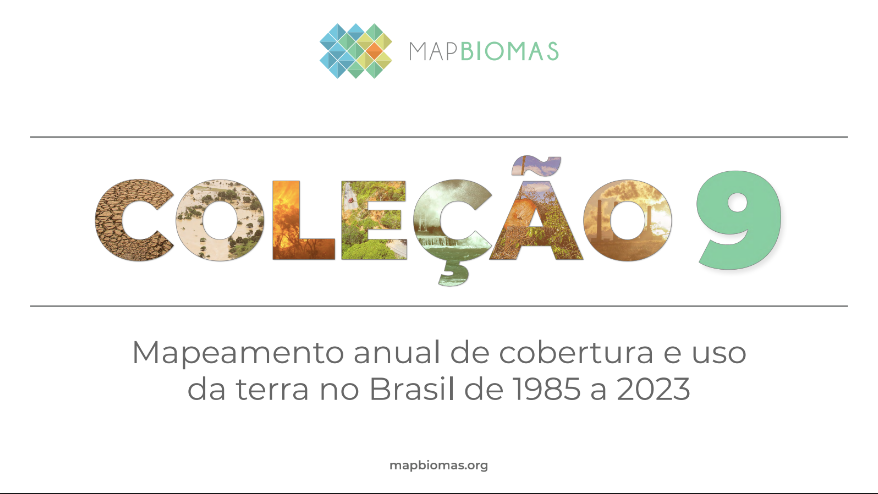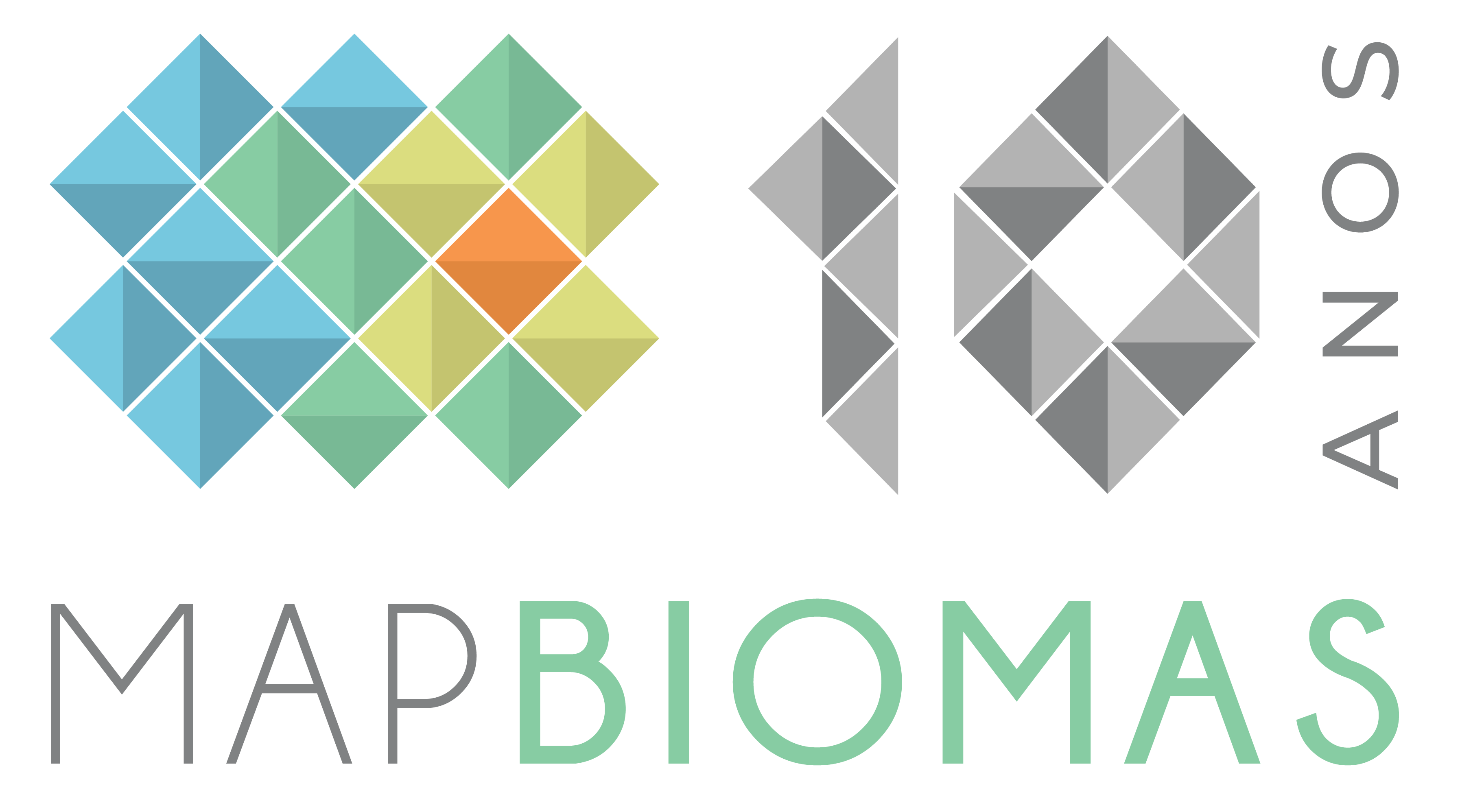Half of the area of native vegetation lost between 1985 and 2023 is in the Amazon, one of the continent's climate stabilizers
August 21st, 2024
New data from MapBiomas shows that the historical loss of natural areas in Brazil until 1985 amounted to 20% of the territory. In the following 39 years (1985-2023), this loss increased to another 13% of the territory (110 million hectares), totaling 33% by 2023. The losses in this most recent period are impressive, as they represent 33% of everything that has been anthropized since the arrival of European colonization until 2023. Natural areas include native vegetation, surface water and non-vegetated natural areas such as beaches and dunes. Half of this total (55 million hectares) occurred in the Amazon.
The extent and speed of land cover and land use change are some of the factors that increase Brazil's climate risk - the theme of the Annual Seminar to launch Collection 9 of MapBiomas' annual land cover and land use maps on Wednesday, August 21, 2024, in Brasilia, with the presence of the Minister of the Environment, Marina Silva. In addition to updating the information up to 2023 for the 29 mapped classes, Collection 9 includes an unprecedented mapping, in beta version, of coral reefs in shallow waters along the Brazilian coast. Another novelty is the balance of gain and loss of native vegetation in the municipalities from 2008 onwards, the year in which the Amazon Fund was established and also when Decree 6.514 was issued, which made the Forest Code in force at the time effective by establishing fines for cases of non-compliance with its rules.
>> The main highlights of Collection 9 (1985-2023)
At a national level, 18% of municipalities showed stability between 2008 and 2023: these are places where the gain and loss of vegetation was less than 2%, with relative stability. In another 37%, there was a gain in native vegetation. The biome with the highest percentage of municipalities where the area of native vegetation grew over these 16 years was the Atlantic Forest: 56%. However, almost half of Brazil's municipalities (45%) lost native vegetation in the period. The biome with the highest proportion of municipalities with significant losses of native vegetation (>15%) is the Pampa: 35%. When all losses in this period are taken into account (starting at 2%), the biome with the most municipalities with losses of natural areas is the Pantanal, with 82%. In the case of Matopiba, in the Cerrado (a region that includes the states of Maranhão, Tocantins, Piauí and Bahia), all states have at least one municipality with more than 30% loss of native vegetation between 2008 and 2023. The states with the highest proportion of municipalities with native vegetation gain are Paraná (76%), Rio de Janeiro (76%) and São Paulo (72%). The states with the highest proportion of municipalities with vegetation loss are Rondônia (96%), Tocantins (96%) and Maranhão (93%).
“The loss of native vegetation in Brazilian biomes tends to have a negative impact on regional climate dynamics and reduces the protective effect during extreme weather events. In short, it represents an increase in climate risks. A significant proportion of Brazilian municipalities are still losing native vegetation; but, on the other hand, the last almost ⅓ of Brazilian municipalities are recovering areas of native vegetation,” comments the general coordinator of MapBiomas, Tasso Azevedo.
The Forest Formation currently covers 41% of the country, but it was the type of native cover that lost the most area from 1985 to last year: 61 million hectares less, a drop of 15% over the period. Proportionally, the Savannah Formation had the biggest loss, with a 26% reduction and around 38 million hectares converted.
In Collection 9, for the first time the mapped native vegetation was related to the different types of phytophysiognomies recognized in the Vegetation Map of Brazil, drawn up by the IBGE. In the last 39 years, the steppe vegetation in the Pampa, savannah in the Cerrado and evergreen seasonal forest in the south of the Amazon have lost the most native vegetation. On the other hand, the Semideciduous Seasonal Forest - which depends on seasonal variations in temperature and humidity, and is notable for having several species that partially lose their leaves, and the Mixed Ombrophilous Forest, also known as Araucaria Forest - which depends on constant rainfall throughout the year, were the most historically exploited typologies, and by 1985 both had already been reduced to less than 50% of their original distribution area.
“Brazil's forests are very diverse, with characteristics and species typical of each region, which are subject to varying degrees of threat. This diversity must be taken into account in public policies for the conservation and bioeconomy of these forests,” adds Eduardo Vélez, from MapBiomas.
MapBiomas also analyzed for the first time the loss of vegetation cover in undesignated public forests - areas under public domain, but which do not yet have a specific use defined as Conservation Units, Indigenous Lands and Forest Concessions, and which are awaiting a formal designation. They occupy 13% of the Legal Amazon and have 92% of their area covered by native vegetation, equivalent to 60 million hectares.
“We have an area of forest in the Legal Amazon that is larger than the state of Minas Gerais. These areas are more susceptible to deforestation than forests that are under some kind of protection regime. It is important and urgent to set aside these areas and turn them into protected territories. Converting these areas to some kind of anthropogenic use would further aggravate the current climate crisis,” explains Luis Oliveira, from MapBiomas' Amazon team.
Indigenous lands remain the most protected
The best preserved areas in Brazil are still the Indigenous Lands (TIs), which cover 13% of the national territory. From 1985 to 2023, they lost less than 1% of their native vegetation, while private areas lost 28%.
In all, Brazil has 281 million hectares of anthropogenic areas and an unprecedented analysis has shown how the loss of native vegetation is affected by relief. The loss was assessed in different slopes of the territory. The results show that in rural areas, the flattest areas, with slopes between 0 and 3% and between 3 and 8%, have proportionally the greatest losses of native vegetation (-20% and -19%, respectively). In urbanized areas, the opposite is true: they show growth of 3.3% per year in hillside areas - where the slope is over 30%, compared to a general average of 2.4% per year, considering all slope classes.
“Urban sprawl in more sloping areas in a context of climate change, such as extreme rainfall, increases the risk of disasters and endangers the population,” says Mayumi Hirye, from MapBiomas' urban areas team.
In Collection 9, MapBiomas launches the beta version of the mapping of coral reefs in shallow waters, which can be detected by satellites with optical sensors. These are marine habitats formed by the progressive accumulation of the calcareous skeleton of corals and algae. The mapping revealed 20,400 hectares of coral reefs off the east coast of Brazil. Most of them (72%) are in Marine Conservation Units, one of which - APA Ponta da Baleia / Abrolhos - accounts for 33% of the entire mapped area.
“The east coast of Brazil, with no great sedimentary discharge from its rivers, has clear waters that are highly penetrable to light. This is one of the factors that explains the high concentration of coral reefs in the region. However, the exuberance of coral reefs in Brazil, and around the world, is threatened by the increase in the average temperature of the oceans, a condition that leads to coral bleaching and, eventually, death,” says Cesar Diniz, from MapBiomas' Coastal Zone mapping team. “It is estimated that 1/4 of all marine life is dependent on corals at some point in its life. Therefore, monitoring the country's coral conditions is absolutely relevant to all of us. Even if we don't realize it, we are all associated with the ecosystem services provided by coral reefs,” he adds.
The Brazilian territory in numbers
- Brazil still has 64.5% of its territory covered by native vegetation; in 1985 it was 76%.
- During this period, the area under pasture grew by 79%, or 72.5 million hectares more than in 1985, and the area under agriculture grew by 228%, or 42.4 million hectares more.
- Agriculture went from 28% to 47% in the Cerrado; from 28% to 45% in the Pampa; from 3% to 16% in the Amazon; from 5% to 17% in the Pantanal; from 28% to 38% in the Caatinga; and from 63% to 65% in the Atlantic Forest.
- In 1985, 48% of municipalities were dominated by agriculture and livestock; by 2023, this predominance had reached 60% of municipalities.
- In total area, the Amazon and Cerrado are the biomes that have lost the most native vegetation. In the Amazon, this amounted to 55 million hectares, or a reduction of 14% over the last 39 years. As a result, the Brazilian Amazon is now 81% covered by forests and native vegetation - which puts it very close to the margin estimated by scientists for its point of no return, estimated at between 80% and 75% native vegetation. This 81% includes 8.1 million hectares (3%) of secondary vegetation, i.e. vegetation that has grown back after being cleared.
- In the Cerrado, 38 million hectares of native vegetation were cleared between 1985 and 2023 - a fall of 27%. Ten percent of the Cerrado (9.7 million hectares) is covered by secondary vegetation. In proportion to their size, the Cerrado and Pampa are the biomes that have lost the most native vegetation. In the case of the Pampa, the loss between 1985 and 2023 was 28% (3.3 million hectares). It is also noteworthy that a quarter of the Pampa's remaining native vegetation (26%, or 2.1 million hectares) is secondary.
- In the Pantanal, the sharpest reduction was in the water surface, which went from 21% in 1985 to 4% in 2023. As a result, areas of herbaceous and shrub vegetation increased from 36% in 1985 to 50% of the biome in 2023 - but only two percent of the Pantanal's vegetation cover (200,000 hectares) is secondary vegetation.
- The Caatinga lost 14% of its native vegetation (8.6 million hectares) between 1985 and 2023, while almost a quarter of the biome (23%, or 11.5 million hectares) is already secondary vegetation.
- The Pampa, Caatinga and Atlantic Forest are the biomes with the highest proportion of secondary vegetation in 2023. In the case of the latter biome, there are already 6.9 million hectares (21%).
- The loss of native vegetation in the Atlantic Forest was 10%, or 3.7 million hectares in 39 years. As a result, forest formations fell from 28% to 26% in the biome. Agricultural activities, on the other hand, went from 63% to 65%.
- Of the 27 states in the federation, only one - Rio de Janeiro - saw an increase in native vegetation over the period, from 30% to 32% of its territory. The other 26 states saw a reduction, the most significant being in Rondônia (from 93% in 1985 to 59% in 2023), Maranhão (from 88% to 61%), Mato Grosso (from 87% to 60%) and Tocantins (from 85% to 61%). The pasture area went from 6% to 38% in Rondônia; from 5% to 29% in Maranhão; from 6% to 24% in Mato Grosso; and from 7% to 30% in Tocantins.
- The states with the highest proportion of native vegetation are Amapá (95%), Amazonas (95%) and Roraima (93%). The states with the lowest proportion of native vegetation are Sergipe (20%), São Paulo (22%) and Alagoas (23%).


